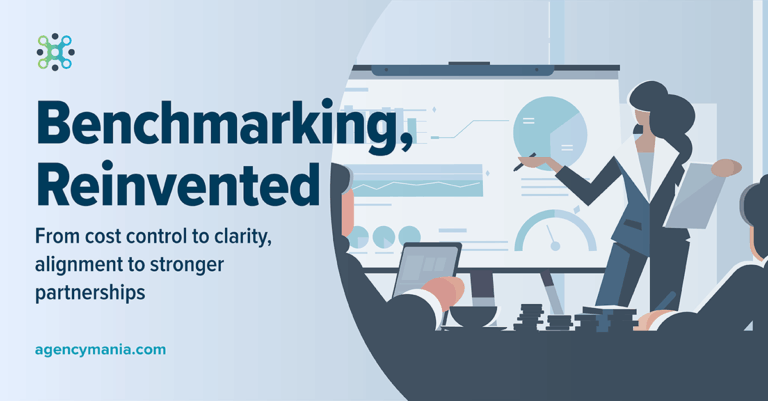How in-house and external agencies can not only coexist but thrive together.
Download a print-friendly version here
By: Bruno Gralpois Author/Speaker, Thought-provocateur, Client/Agency Guru, Entrepreneur, Innovator
The growing number of brand advertisers setting up their own in-house agencies has grown exponentially in recent years. This phenomenon is often mentioned by industry analysts and top agency leaders as a lead contributing factor to the financial pressure felt by agencies. Advertisers often look to their inhouse agency as a viable solution to improve turnaround times and move faster, streamline internal communications, better leverage institutional knowledge, reduce costs, and improve brand compliance, among the many benefits. The services provided by these in-house agencies can be quite broad in nature, ranging from digital design, advertising, and sales collateral to video production, social media, media planning, and much more. Yet having an in-house agency does not imply that these resources are duplicative or competing with external roster agencies.
On the rise: in-house Programmatic
There have been well publicized moves by large brands looking to strengthen their competencies by relying less on external agencies in some strategic areas. Some of these big brands are taking more strategy and executional expertise in-house. Media planning & buying, Analytics, Influencer Marketing, and Social Media all seem top of mind to them. In the media category, Allstate, StubHub, Unilever, and Netflix have all taken some media buying in-house. Unilever is also eliminating waste and driving more effective use of budgets. Because of its zero-based budgeting efforts, the brand squeezed $700 million out of production costs in 2017 by making fewer ads and doing more work through its in-house advertising agency called U-Studio, of which half was reinvested by the brand into media and in-store outlays. That’s the case of Sprint as well, now handling its digital ad buying and advertising creative, as well as “programmatic,” search advertising, and even traditional media buying typically handled by external agencies. Sprint is not new to the concept. It follows the launch of its Yellow Fan Studios, an in-house creative studio. Language-learning firm Rosetta Stone is handling all media in-house with a team handling social, mobile, partnerships, display, and paid advertising. Deutsche Telekom announced a revamp of its media marketing strategy by bringing it in-house.
However, Programmatic ad buying has been the recent focus. Per a report from Advertiser Perceptions, 32% of marketers plan to bring programmatic buying in-house, and more than 50% of marketers and agencies believe this job will ultimately become the responsibility of the brand. Per a new study by Centro, 81% of marketers plan to bring at least some of their programmatic advertising in-house over the next 12 months, while 59% said that by next year, they will no longer outsource their programmatic media buying to a third party. Look at Anheuser-Busch InBev, which moved Programmatic in-house, claiming 25% savings in the US alone. The brand also created an in-house content production studio and moved Social Listening and Analytics in-house. The spirits maker Pernod Ricard is also moving more digital expertise in-house and claimed it saved $71.5 million by purchasing 25% of its media in-house during the first half of 2017, buying inventory directly from demand-side platforms. Recent moves include Nationwide (Programmatic), Target (Influencer Marketing and Programmatic), Jaguar Land Rover (Analytics and Programmatic). The list seems to go on.
How big is BIG
Many brands go through experimental phases and grow their in-house agency teams slowly and gradually, up to a comfortable cruising speed for their organization, while collaborating with outside agencies. That’s the case of Verizon’s in-house agency unit, 140, which now employs 150 across creative, production, project management, and strategy. Bank of America’s in-house agency, Enterprise Creative Solutions (ECS), was built 10 years ago as a low-cost, single-service provider to a strategic, creative, cost-efficient brand champion, and today works like a traditional agency with account, creative, production, and more. Others move the lion’s share of the work through their in-house agencies as shown in the visual. Take a closer look at Intel’s Agency Inside which was nominated as Ad Age’s 2017 in-house agency of the year. They are known to handle up to 70% of all the work Intel produces, a drastic change for a brand that used to produce most of its work through its outside agencies.
In-house agencies have been around for a while and have gained experience on how to run effectively over decades. So, some in-house agencies are not only big, they are also mature. Per IHAF, 16% of in-house agencies have been in place for over 30 years.
The rise of external in-house agencies
To counter the growth of in-house agencies, some agencies are responding with their own solutions. For example, WPP digital agency Wunderman launched on-site unit Wunderman Inside to give advertisers like Best Buy and Sainsbury’s nimble, cost-effective creative and strategic insights services without the potential tradeoffs of in-house agencies. Many brands have reportedly been challenged to realize the benefits of their in-house agency model or have experienced numerous roadblocks like the ability to hire top talent. Wunderman Inside provides clients with a mix of on-site specialists and in-agency resources. Advertisers don’t have to worry about hiring or training talent, or having that expense sit on their payroll, but still get the benefit of having these resources embedded within their teams. This is what drove Oliver to also offer clients their external in-house resources, which they call “better inside.” They build dedicated agencies inside their client organizations with the right skills and capabilities, ranging from brand strategy, integrated marketing, content and community management, production, and more.
Lessons learned in cross-agency collaboration
In-house agencies are known to be nimble, cost-effective, well aligned to the brand and the strategic imperatives of the business, and are on the radar of major brands trying to balance creativity, efficiency, and outside perspective. But often, the use of in-house agencies is limited to a few disciplines and the balance of the work is handled by the existing roster of external agencies. Look at United Airlines, which is moving video content creation in-house and handling creative content strategy, as well as execution, to complement work the brand does with agencies like McGarryBowen and Wunderman. The roles and responsibilities are clear, avoiding territorial issues that may result from confusion about who does what.
At last year’s ProcureCon conference, I had the opportunity to host a panel about this topic and how external and in-house agencies should collaborate in the years ahead. The feedback was unanimous: brands want to see their in-house agencies (no matter the scale) collaborate with their external agency partners better. To do so, they must set clear partnership goals and expectations, articulate what collaboration must look like, and measure the performance of all their agencies (whether in-house or external) objectively and fairly.
Neither in-house or external agencies should operate independently. To the contrary. Finding the right balance of internal and external talent to build a top-notch performing organization is one of the CMOs top challenges. The collaboration of in-house and external agencies is an asset to advertisers looking to build highly effective teams. Together, they are simply stronger.









